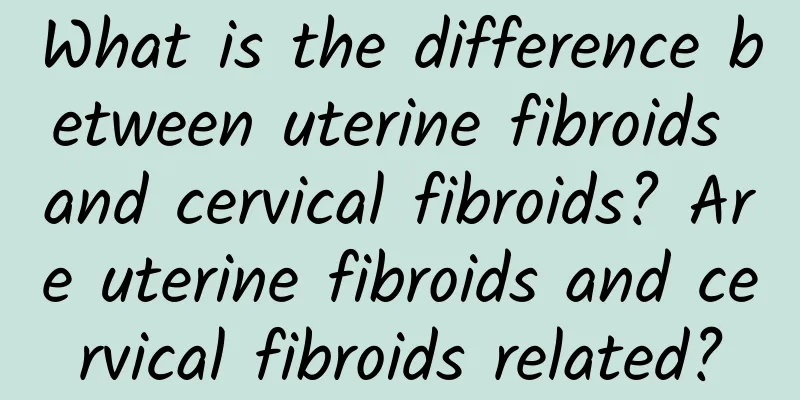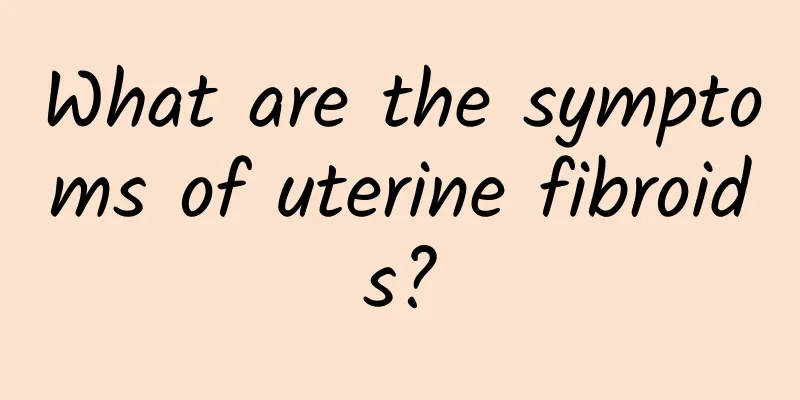What are the symptoms of ovarian cysts and how to prevent them

|
What are the symptoms of ovarian cysts and how can they be prevented? Symptoms of ovarian cysts include: Ovarian cysts have no obvious clinical manifestations in the early stages, and patients often discover other diseases during gynecological examinations. As the tumor grows, patients will experience symptoms and signs depending on the nature, size, development, secondary degeneration or complications of the tumor. 1. Discomfort in the lower abdomen Due to the weight of the tumor itself and the influence of intestinal peristalsis and posture changes, the tumor moves in the pelvic cavity, involving its pedicle and pelvic infundibulum ligament, causing distension and descent of the lower abdomen or fossa. 2. Increased abdominal circumference and swollen abdomen This is the most common phenomenon in the main complaint. The patient will only notice the enlargement of the abdomen when he realizes that his clothes or belt seem tight, or he will feel it accidentally in the morning. He presses on the abdomen and finds swelling and abdominal distension discomfort. 3. Abdominal pain For example, the tumors have no complications and pain is rare. Patients with ovarian tumors may experience abdominal pain, especially when it occurs suddenly, which is often caused by torsion of the tumor pedicle, occasionally tumor rupture, bleeding, or infection. Malignant cysts cause mainly abdominal and leg pain. Pain often causes patients to go to the emergency department. 4. Menstrual disorders Generally, ovarian, or even bilateral ovarian cysts, do not cause menstrual disorders because they do not destroy all normal ovarian tissues. Some uterine bleeding is not endocrine, or it may be due to ovarian tumors changing the pelvic blood vessel distribution, causing endometrial congestion; or it may be due to ovarian malignant tumors directly metastasizing to the endometrium, causing menstrual disorders due to other secretory influences. 5. Compression symptoms Large ovarian tumors can cause dyspnea and palpitations, and large amounts of ascites can also cause these symptoms; but in some patients with ovarian tumors, dyspnea is caused by effusion in one or both sides of the chest; it is usually combined with ascites to form the so-called Meigs syndrome. |
<<: Can I have an IUD inserted if I have pelvic effusion?
>>: How to relieve primary dysmenorrhea?
Recommend
Principles of treatment of idiopathic hyperprolactinemia
Idiopathic hyperprolactinemia refers to elevated ...
Cost of treatment for habitual miscarriage
Abortion is not scary. What is scary is a mentali...
To prevent vaginitis, pay attention to the method of vaginal cleaning
MicrosoftInternetExplorer402DocumentNotSpecified7....
Is chronic cervicitis with squamous cell carcinoma a lesion?
Chronic cervicitis with squamous cell carcinoma i...
What are the dietary treatments for cervical erosion? 3 foods that are suitable for cervical erosion and 3 taboo foods
Patients with cervical erosion should eat more nu...
How long does it take to cure mild endometrial thickening?
I believe that many women have gynecological dise...
Understand the examination and diagnosis methods of acute cervicitis
Acute cervicitis is mainly caused by miscarriage ...
The main causes of pelvic inflammatory disease in women
The incidence of pelvic inflammatory disease has ...
Can patients with congenital absence of vagina eat soy products?
Congenital absence of vagina is extremely difficu...
Women of childbearing age should be careful about cervicitis. How to treat cervicitis?
Women of childbearing age should be careful about...
What symptoms indicate that you have cervicitis? Women must know these symptoms of cervicitis
Cervicitis is a very common gynecological disease...
What are the main symptoms of chronic adnexitis?
What are the main symptoms of chronic adnexitis? ...
What are the symptoms of uterine fibroids?
Uterine leiomyoma is also called uterine fibroids...
Can a left ovarian cyst turn into a tumor? What should I pay attention to?
Ovarian cysts have no obvious clinical manifestat...
The Department of Health recommends 42 healthy rice dumplings with an average calorie of 300 kcal
Next Saturday, the 23rd, is the Dragon Boat Festi...









